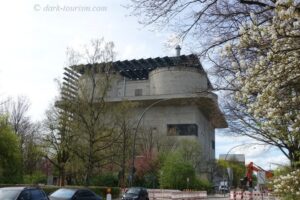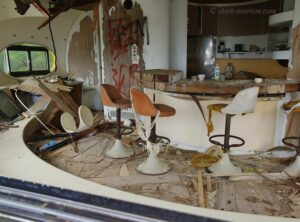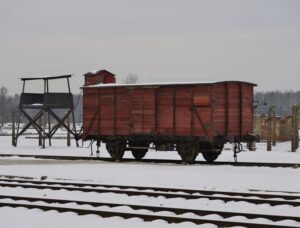On this day, 77 years ago, on 14 October 1943, a revolt at the death camp of Sobibor led to the escape of hundreds of Jewish prisoners from this infamous and sinister place, of whom 50 to 60 individuals managed to survive and tell the story of this camp after WWII, especially Thomas Blatt (see also LAMOTH) and Alexander ‘Sasha’ Pechersky, the Soviet Red Army POW who led the revolt/escape.
The story is on record in various places where more of the details can be found. Here only the briefest of summaries has to suffice.
Of crucial importance is to note first of all the significant difference between a concentration camp and the three dedicated death camps that were purpose-built for the so-called ‘Operation Reinhard’. That was the code name for what at the Wannsee Conference had been referred to – with typical Nazi cynicism – as ‘the final solution of the Jewish question’. This was the ‘industrialized’ mass murder programme to exterminate all of the Jews captured by Germany within the occupied territories of Poland, as well as many deported there from western countries such as the Netherlands.
These death camps were not characterized by those endless rows of wooden barracks typical of the large concentration camps. At the much smaller death camps almost all of the new arrivals, sent there mostly by train, were immediately processed, i.e. stripped of their belongings, even their hair, and sent straight into the gas chamber to be killed en masse. The other two Operation Reinhard camps were Treblinka and Belzec (Auschwitz had a dual role of both concentration camp and death camp). Within just a bit over one year, some 1.7 million Jews were thus murdered by gassing between early summer 1942 and autumn 1943, of which an estimated 250,000 were gassed at Sobibor.
At all these camps some Jewish prisoners were ‘selected’ to be (temporarily) spared death because they were useful to the Nazis for forced labour and the practical running of the camp. This included the ‘sorting’ of the belongings of the victims, in particular valuables, and extracting gold teeth from the corpses. Through this the SS men commanding the camp could also personally enrich themselves from the looting. They even had Jewish jewellers make pieces from victims’ gold teeth.
In total only about 600 prisoners were held at Sobibor. The worst assignment was to the so-called “Sonderkommando”, or ‘special commando’, i.e. those prisoners forced to do the dirtiest work in the camp: the clearing and cleaning of the gas chambers after each batch gassed in them – a truly gruesome death that took around 20 minutes for the gas, delivered as exhaust fumes from an engine, to take hold … I’ll spare you the further details … the corpses were then buried in mass graves or cremated, mostly out in the open. This part of the camp, however, was totally separated from the rest, and the Sonderkommandos were held in complete isolation.
Amongst the prisoners in the other parts of the camp a loose underground organization formed that was beginning to make escape plans. This was boosted with the arrival of a few Soviet Jewish prisoners, in particular Pechersky, who through his military experience was in a better position to organize the uprising. This included the assassination of the dozen or so SS men on duty on that afternoon of 14 October. These were lured into workshops on pretexts such as the arrival of particularly desirable pieces of clothing from the sorting sheds, and there they were killed as quietly as possible. With the SS command gone it was hoped that the watchmen (many Ukrainians), without orders from their superiors, would be confused enough for many prisoners to escape as soon as the signal was given during the evening roll call.
However, one of the SS men who had been absent that day returned early and discovered that something was wrong and started shooting at the prisoners. Chaos ensued, the guards in the watchtowers opened machine-gun fire at the escapees while these trampled down the gate and fled into the forest. Many were mowed down, yet others were killed in the minefield that surrounded the camp, but a few hundred did get away. The Nazis then launched a hunt for the escaped prisoners and those found were all executed, alongside those who hadn’t made it out of the camp. Yet it was still the most successful escape attempt made at any of such camps (there had also been a smaller revolt at Treblinka, and later at Auschwitz). Afterwards the Sobibor camp was almost completely dismantled and bulldozed over. Trees were planted and the site became practically invisible.
For many decades after the war, nothing at the site hinted at its dark history. It wasn’t until the the mid-1960s that first memorial monuments appeared. The story of Sobibor was brought to wider international attention much later still through the medium of film. Sobibor featured in an episode of the US-made TV four-parter Holocaust in 1978, and in 1987 a movie dramatization, again for TV, was released in Britain in 1987, entitled Escape from Sobibor directed by Jack Gold and starring Rutger Hauer, Alan Arkin and Joanna Pacula, based on a book of the same title by Richard Rashke published in 1983.
In 2018, a new take on the subject was made through the Russian movie simply entitled Sobibor by actor-director Konstantin Khabenskiy, who plays the character of Pechersky in it, alongside an international cast including Christopher Lambert. I’ve had the DVD of that film for a while and now, partly in preparation for this post, finally sat down to watch it the day before yesterday.
As you can guess it doesn’t make for uplifting viewing, very far from it, but I found it quite well made. Some stretches, especially in the first part of the film, felt a bit unconnected and without a clear storyline, but maybe that just reflects the reality of camp life before the revolt. I also found fault with a couple of inaccuracies, of which the worst has to be the one depiction of a gassing of a group of women, namely because this showed the gas hissing out from overhead showerheads. This is quite a widespread misunderstanding. The Nazis did indeed often camouflage gas chambers as shower rooms, but the showerheads had no function and were never used for actually delivering the gas. So the perpetuation of this misconception is a weakness of the film. On the other hand, the film-makers evidently did their homework and many of Pechersky’s post-war accounts of scenes at Sobibor were accurately woven into the script, even verbatim. At other times, though, it felt like imagination was running a bit too far in the depiction of sadistic Nazi brutality. In short, it’s well worth watching, but do be prepared for an extremely dark two hours that can be quite haunting afterwards. It’s definitely not for the faint-hearted.
Later still, only in July this year, a remarkable donation was made to the US Holocaust Memorial Museum: a cache of black-and-white photographs taken at Sobibor by deputy commandant Johann Niemann – who was one of the SS men assassinated in the revolt; but the photos remained with his descendants. Now, for the first time, you can see images of the perpetrators at the site (often relaxing to music and games and at private parties), as well as the “beautified” parts of the camp, the ones for the SS men, which were made to look like a picturesque Tyrolean village full of clichéd Teutonic “Gemütlichkeit” (very roughly ‘cosiness’). One reason for this design was to deceive the arriving trainloads of victims into believing that this was a pleasant place. That it was anything but for the victims only dawned on them when it was too late. That’s also why looking at these photos now is so chilling, despite the outwardly harmless-looking imagery. Also knowing what these smiling SS men enjoying themselves actually did in their ‘jobs’ – participating in the worst crime against humanity the world has ever seen – that makes them additionally sinister. If you want to take a look yourself, here’s the (external) link to the online photo gallery.
At the Sobibor site itself, more commemoration was added following the end of the communist regimes in the Eastern Bloc and the Cold War, though it remained the most neglected such site … until recently, that is.
Currently a substantial archaeological programme is in progress at Sobibor and an all-new museum about it is under construction. During that time the site is closed to the public. The pandemic will have delayed work, but when at some point the completely overhauled memorial site reopens it will be a must-see, worth travelling for in its own right once travelling will be possible again (hopefully before too long).
It will be especially interesting to see to what degree the pivotal role of Pechersky in the revolt will come across given he was a Russian. Some museum commodifications of WWII-related topics within Poland have come under criticism for being too much on the nationalistic side, rather emphasizing heroic acts by Poles rather than others (this is also connected with the current political climate in Poland, of course, and has already affected e.g. the new WWII Museum in Gdansk). It remains to be seen whether the management of Sobibor has managed to avoid any such influences.
After this heavy amount of text I still owe you some more photos. The one at the top of the post, and repeated just below, shows the railway sidings with a rusty ‘Sobibor’ sign.
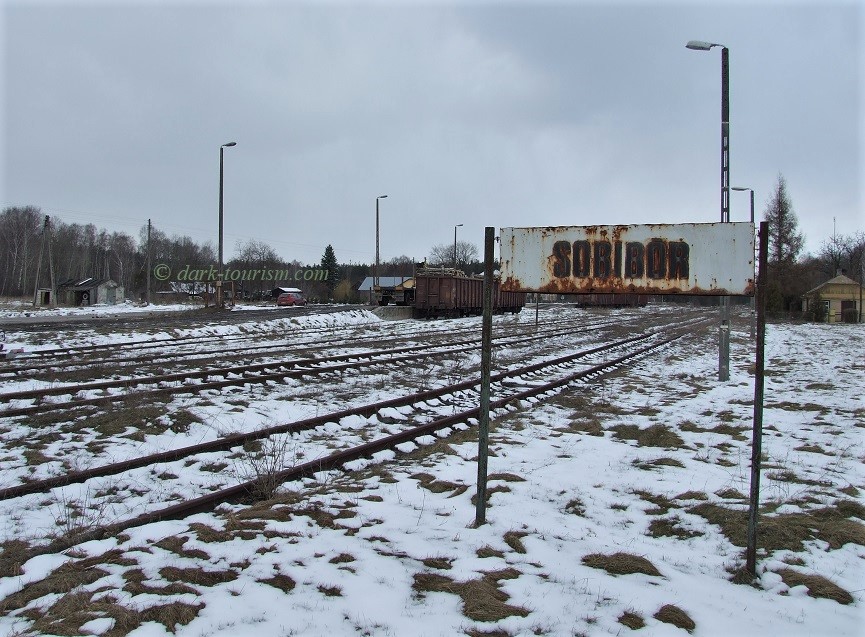
It’s been a while since my first visit to Sobibor during a wintry spell in the spring of 2008, so my photos don’t represent what the place looks like now, nor what it will be like when it reopens, so these are only for the record, as quasi-historical documents in themselves. This next photo shows the core of the site back then:
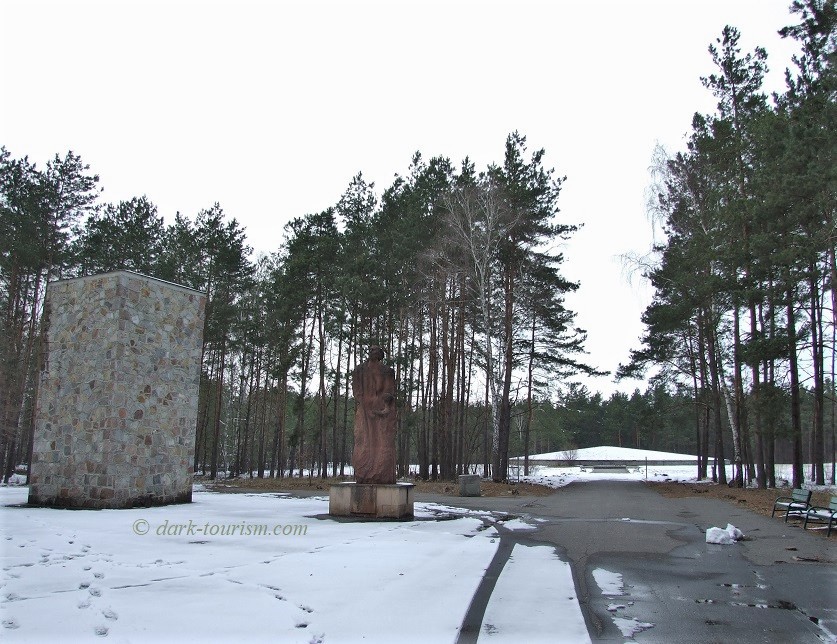
While the stone block is abstract, the sculpture is a little more topical:

The largest element of the old memorial site is this low cone – a ‘mound of ash’:
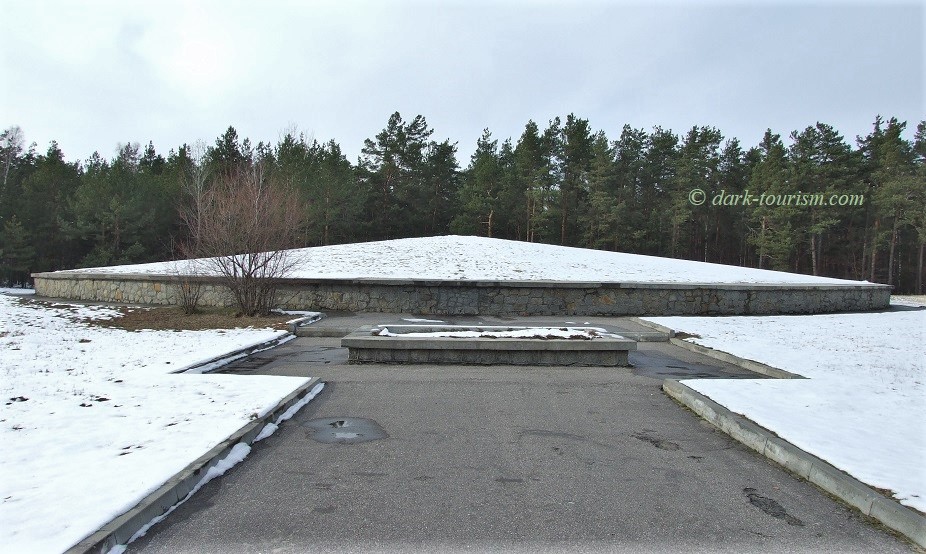
An element added later was the so-called ‘Lane of Remembrance’, though at the time of my visit the frames for holding information panels were empty:
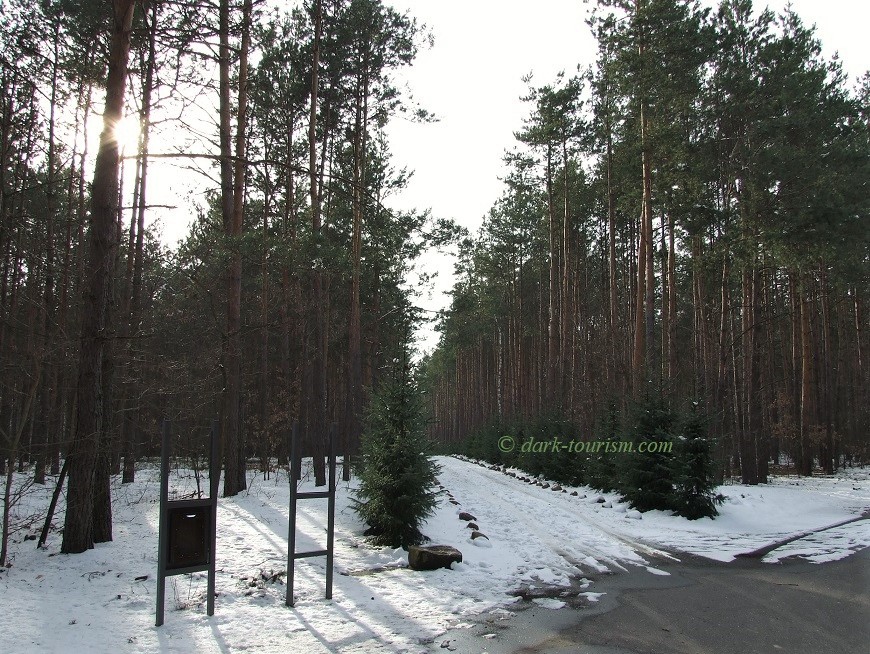
Moreover, the previous small museum at the site was still closed (it wouldn’t have opened before May), so I wasn’t able to see it for myself:
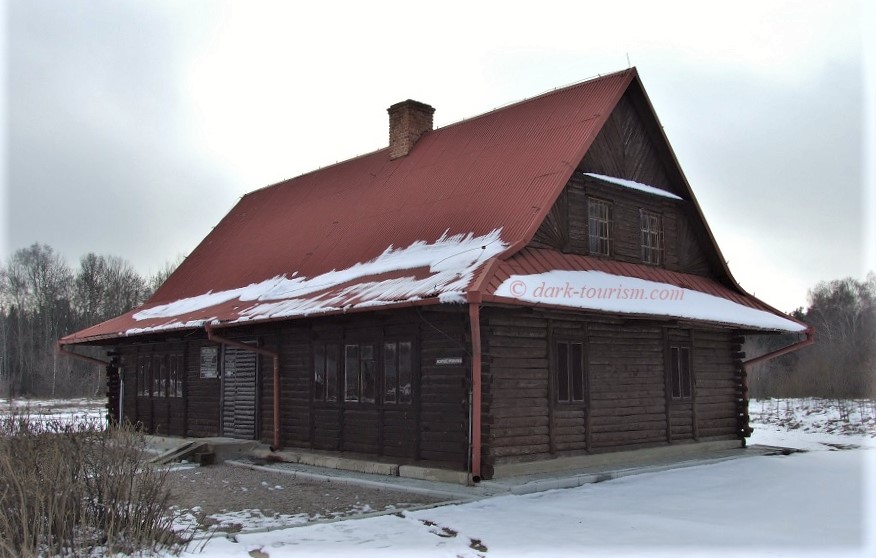
A short distance from the museum, by the roadside, one of the post-Cold-War-era newer additions could be found, a memorial stone wall with various multilingual plaques. Here it is stated that almost all the victims were Jews. And it also noted the revolt of 14 October 1943.
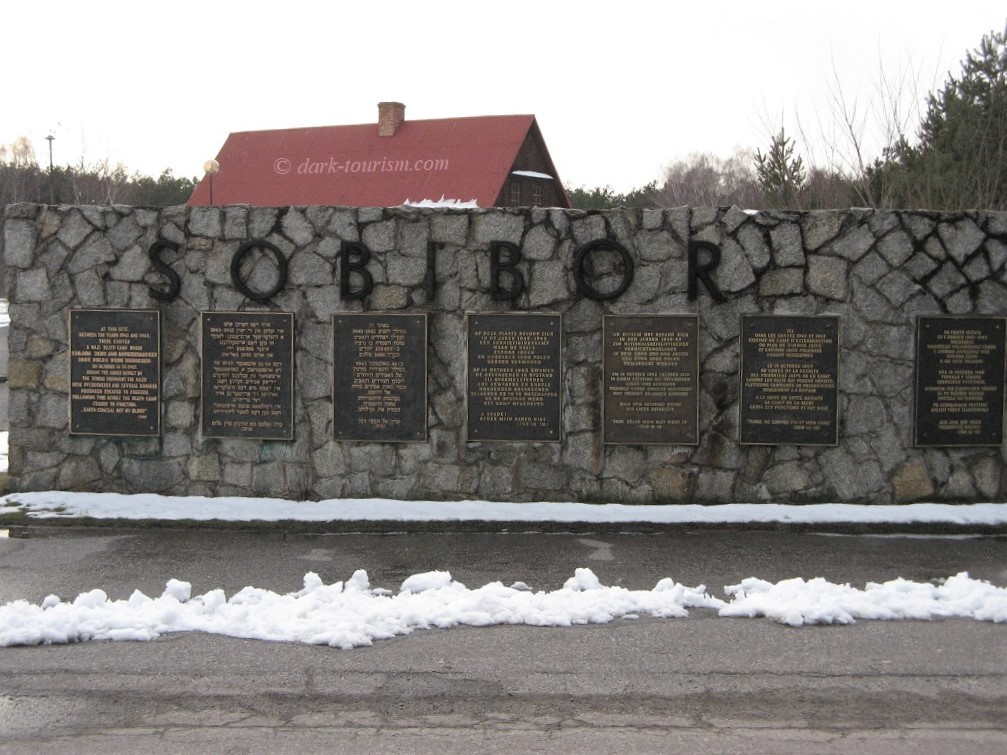
Shortly before leaving, I noticed a dog was eyeing rare visitors to Sobibor with suspicion:
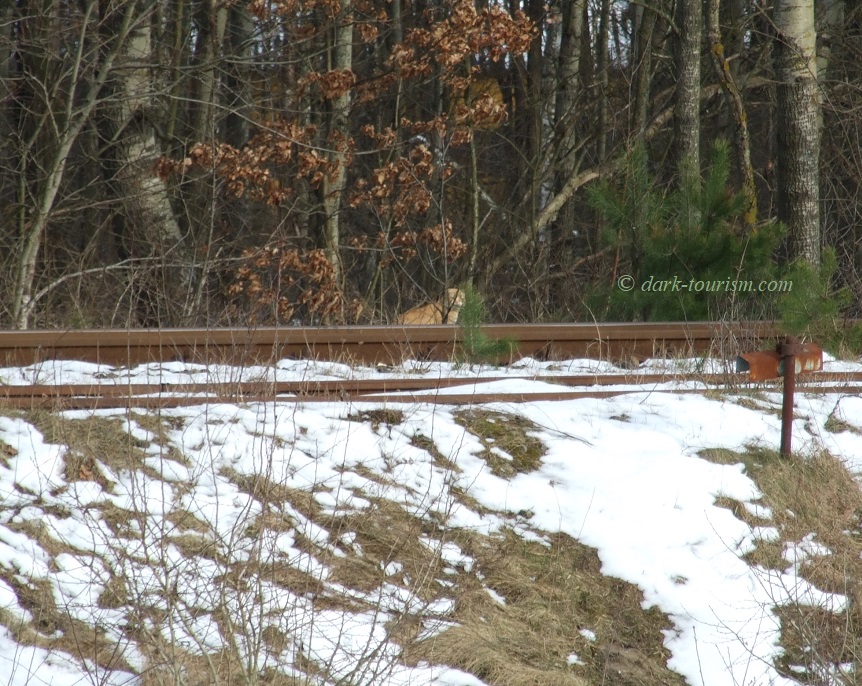
In fact this dog was the only other living thing I ever saw at the site; there were no other visitors, and I never spotted any locals either.
So, as these photos probably convey too, the place felt quite forlorn at the time of my visit in 2008, the snow only emphasizes this even more.
The site had also not been so easy to find, and the drive there ran parallel to the River Bug, which forms the border of Poland with Ukraine and Belarus. As that’s the outer EU border it is perhaps not surprising that it is more guarded than others, and indeed I was stopped by police on my approach to Sobibor and had to present ID and my hire car paperwork before they let me drive on.
I wonder if signposting will also be upgraded when the new memorial and museum are finished … well, I’ll hopefully be able to find out for myself in due course …

